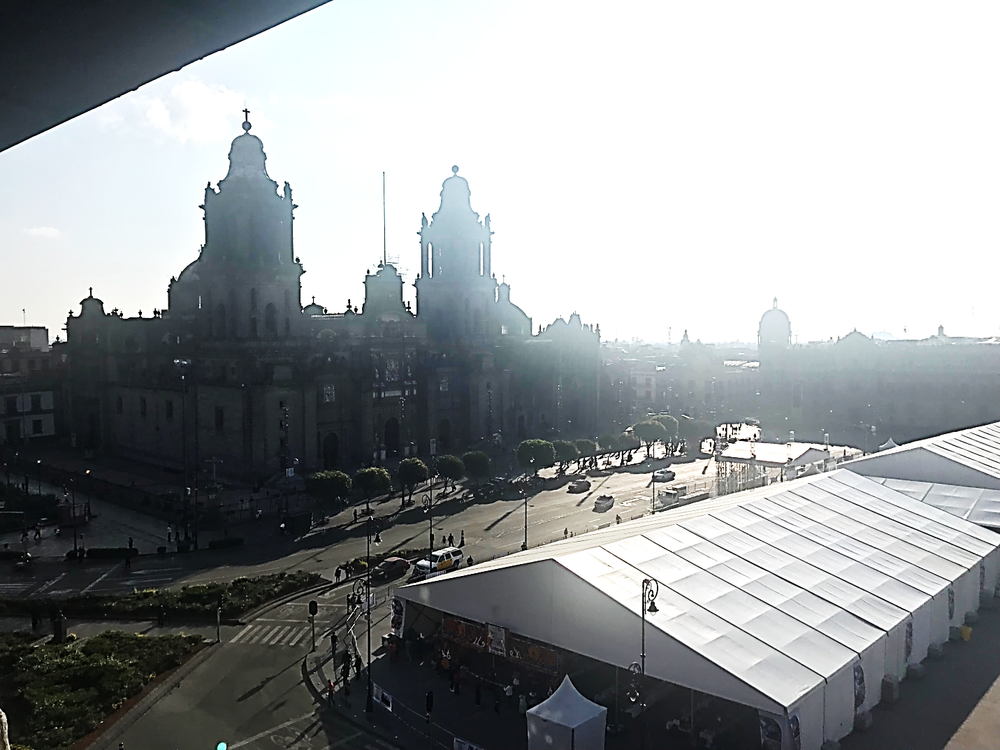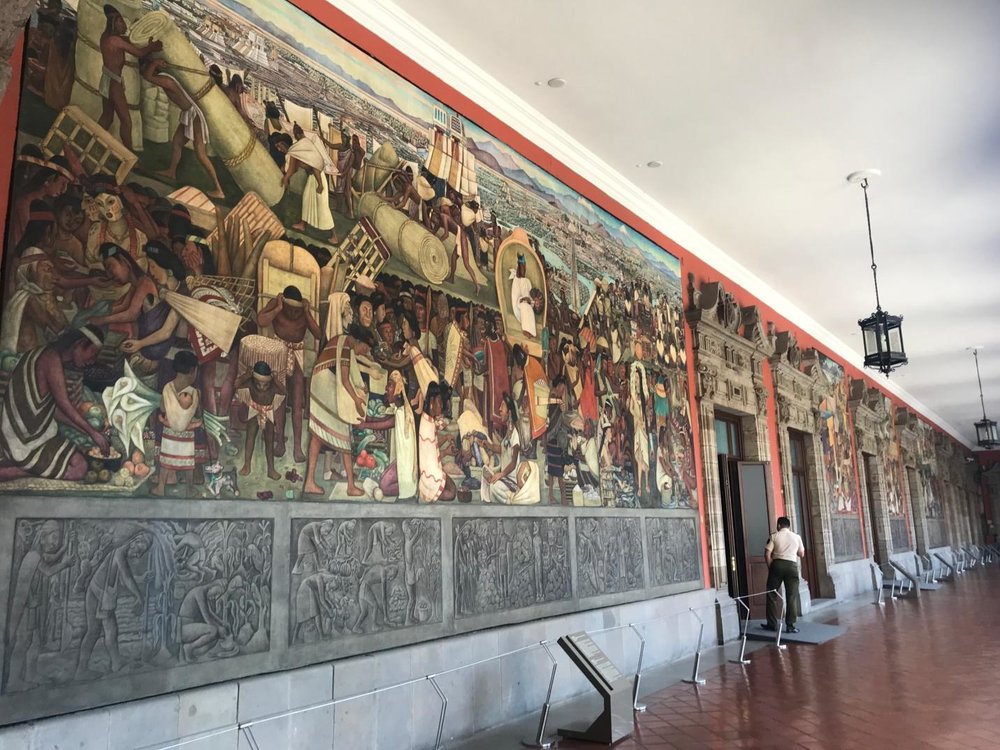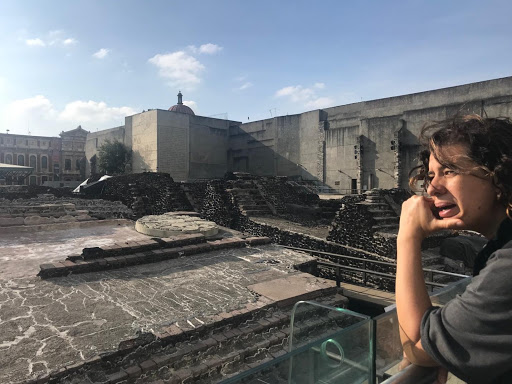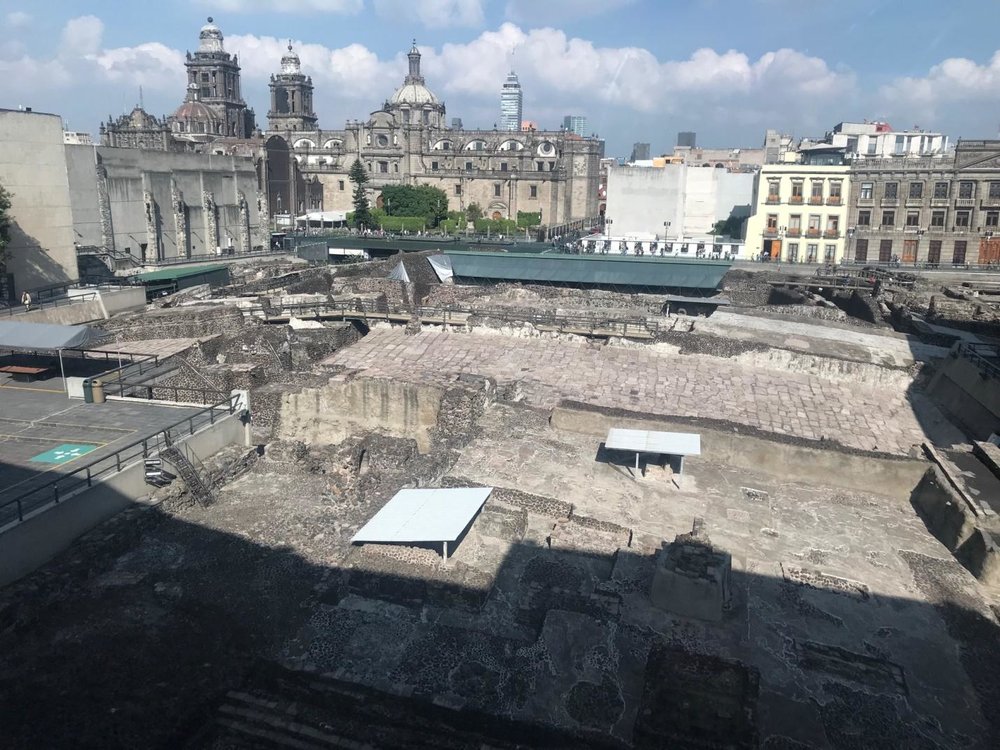Encounter with Topologies of Memory
November 29, 2018
by Jeca Rodríguez-Colón, Cohort ’15
This summer I traveled to Mazatlán, Mexico with Sandra Stephens, a friend and classmate from my IDSVA cohort, to take a break from our surroundings and immerse ourselves in an intensive review in preparation for our oral examinations. We had a long layover in Mexico City, and we decided to use every minute of it. In three to four hours we managed to visit three key places at the Zócalo, one of the most prominent plazas in Mexico City. We went to the Catedral Metropolitana de Ciudad de México (whose foundation includes the original Basilica), followed by a short walk to the Museo del Templo Mayor and Diego Rivera’s murals at the Palacio de Gobierno.


Although each of those encounters reminded me of our first topological studies residency in Italy, our visit to the Basilica San Clemente, Foro Romano, and the Templo Mayor in Mexico City had the most significant connections to that first topological experience.

During our 2016 visit of the Basilica San Clemente in Rome, we learned that although it is a 12th-century Christian church, it is also an example of how one structure can be built upon another, erasing its visibility in the present without destroying its past. The Basilica San Clemente is a three-tiered structure, the 12th-century Christian church on the first level, underneath the first level was a 2nd Century Mithraic Temple, and underneath that level was a 1st century AD house.
In Mexico City, the Museo del Templo Mayor begins with an introduction to the site. It features some historical facts about the archeological site, followed by the ruins of the Aztec Temple, and at the end the archeological museum containing the site’s artifacts. As one begins the walk through the ruins, one sees spaces dedicated to worship. We noticed some details of their irrigation systems.

However, what struck me the most was the left side corner, about halfway through the walk, where you can observe the changes in the temple before the Spaniards’ invasion. This corner reminded me of the Basilica San Clemente. This corner allows us to observe how the Mexicas – most commonly known as the Aztec empire – built upon its temples instead of destroying them. The Mexicas believed the Templo Mayor was at the center of the universe; therefore their temple cannot be moved. With each new emperor, they enlarged the temple instead of destroying it.
.jpeg)
At this particular corner, one can see the ruins of several of those layers. The temple has been enlarged at least seven times. If it wasn’t for the Spanish colonial era which lead to the destruction of the Aztec temples and civilization, and later on to the restructuring of their center into La Plaza de la Constitución (known as El Zócalo), perhaps we could have seen all the layers of the temple as clearly as we can at the Basilica San Clemente.
In both of these places of worship, we can see a sign of respect for the past within their desire for growth, an intention of building upon instead of destroying its history. From Rome to Mexico, I’ve been able to experience the topologies of memory.
